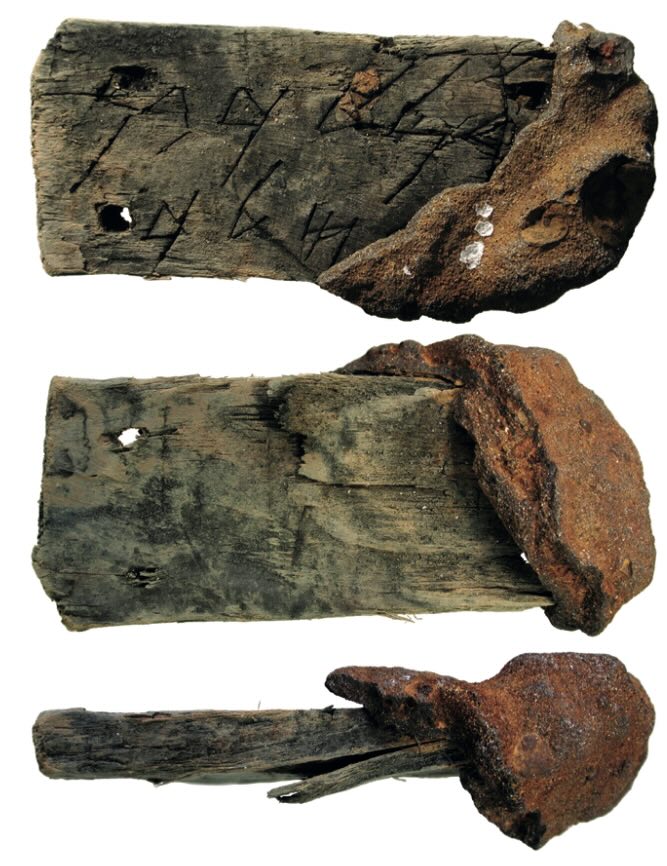
The Alcossebre Phoenician Wooden Tablet is an archaeological artifact discovered by accident in 2021 at a cove near Alcossebre, Castelló, Spain. Dating from approximately 619–559 BCE, it consists of a small wooden plaque, exceptionally well-preserved, partially enclosed in corroded iron. The artifact bears an inscription in the Phoenician alphabet, marking it as one of the oldest and most significant testimonies of Phoenician writing and trade practices in the western Mediterranean.
Scholars interpret the tablet as a commercial label or tag, likely affixed to goods for trade, identifying them by owner, sender, or recipient. The main inscription refers to an individual named Bodmilk, son of Bodmilk or Abimilk, suggesting a Phoenician merchant or agent. A secondary, smaller inscription may either refer to another individual named Apen, a commodity (possibly "wheels"), or carry administrative meaning.
The tablet's discovery adds valuable evidence of Phoenician commercial activity on the Iberian Peninsula's eastern coast during the late 7th to early 6th centuries BCE. Its excellent state of preservation—despite being submerged for more than 2,500 years—makes it a unique example of Phoenician epigraphy on wood, an otherwise extremely rare survival.
Generated by ChatGPT based on the Spanish publication: Zamora López, José Ángel. Nueva inscripción fenicia, sobre una tablilla de madera parcialmente envuelta en hierro, hallada en Alcossebre (Castelló, Comunitat Valenciana, España). Quaderns de Prehistòria i Arqueologia de Castelló, vol. 41, 2024. (Disovered by Kimi K2)